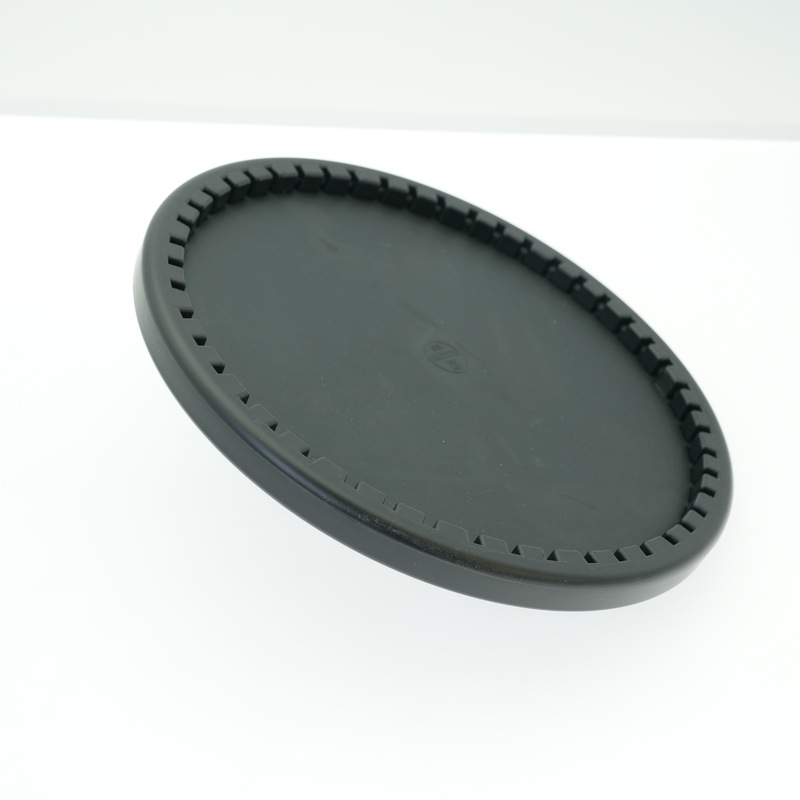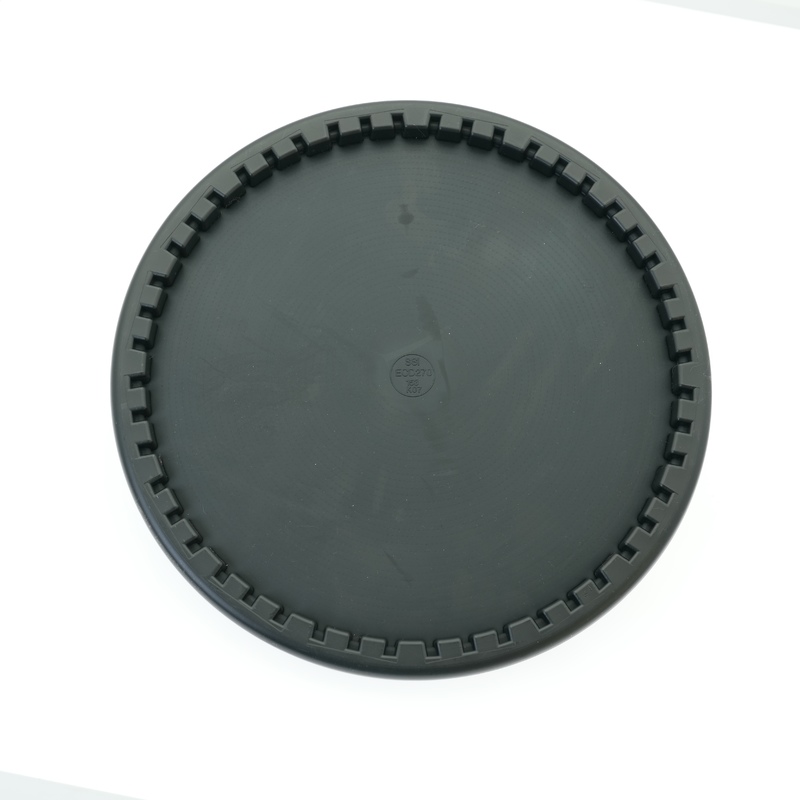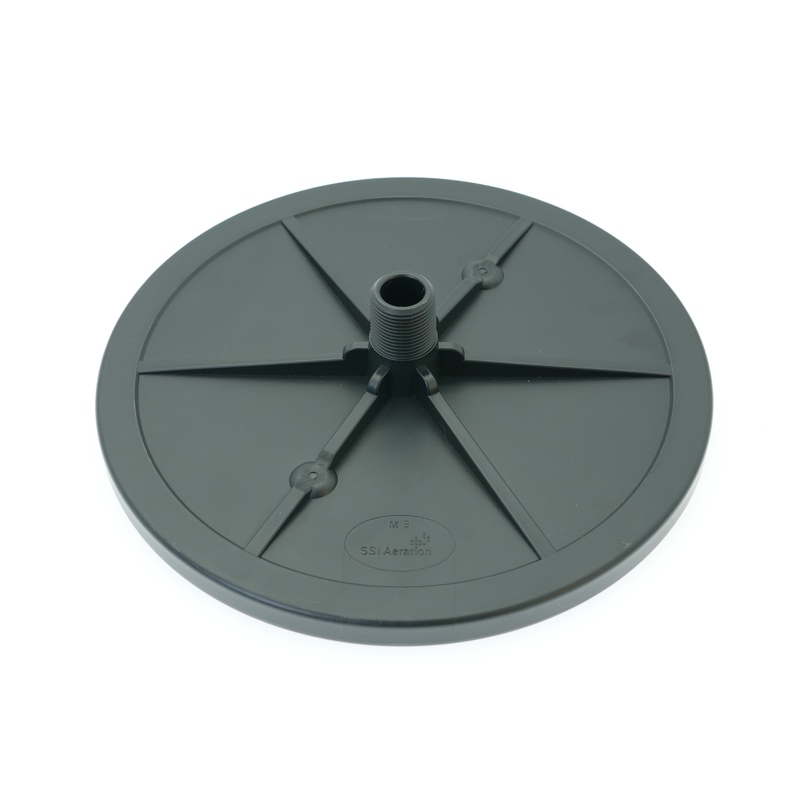SSI ECD215 Scheibendiffusorsystem Advanced Aeration für die biologische Abwasserbehandlung
Überlegene Belüftungstechnologie für globale Abwasserlösungen
Die Belüftung ist ein Prozess, der einen intensiven Kontakt zwischen Luft und Wasser erleichtert.mit dem Ziel, Sauerstoff aus der Luft in das Wasser aufzulösen oder unerwünschte Gase und flüchtige Stoffe aus dem Wasser in die Luft freizusetzenMit anderen Worten, es ist eine Methode, um den Massenübergang zwischen Gasen und Flüssigkeiten zu verbessern.
Während der Belüftung wird Sauerstoff aus der Luft in das Wasser übertragen und durch Masseübertragung von der Gasphase in die Flüssigphase überführt.Eine der am weitesten verbreiteten Theorien zur Erklärung dieser Massenübertragungsdiffusion ist dieZwei-Film-Theorie, vorgeschlagen von Lewis und Whitman.
Die Zwei-Film-Theorie postuliert, dass"Gas-Wasser"-SchnittstelleÜber diese Folien hinaus fließen Luft und Wasser in einem turbulenten Zustand, während zwischen den Gas- und Flüssigkeitsfilmen der Fluss laminar, ohne Konvektion, ist.Unter bestimmten Bedingungen, entwickeln sich Druckgradienten und Konzentrationsgradienten.Der Sauerstoff aus der Luft diffundiert weiter durch den Flüssigfilm in den Wasserkörper.Die Flüssigkeits- und Gasfolien wirken somit als Barrieren für den Sauerstofftransfer.
Es ist klar, dass der wirksamste Weg, den Widerstand des Flüssigfilms zu überwinden, darin besteht, die"Gas-Flüssigkeit"-Schnittstelle.
Dabei werden spezifische Ansätze wie:
Reduzierung der Blasengröße
Die Zahl der Blasen erhöht
Erhöhung der Turbulenz von Flüssigkeiten
Erhöhung der Installationstiefe der Belüfter
Verlängerung der Kontaktzeit zwischen Blasen und Flüssigkeit
Geräte zur Belüftung werden in der Abwasserbehandlung gerade deshalb weit verbreitet, weil sie diese Grundsätze umsetzen.

Hauptmerkmale und Vorteile

Technische Spezifikation
| Modell |
Die Kommission hat die Kommission aufgefordert, die folgenden Maßnahmen zu treffen: |
Die in Absatz 1 genannten Angaben werden in Anhang I der Verordnung (EU) Nr. 182/2011 aufgeführt. |
Die in Absatz 1 genannten Angaben sind zu beachten. |
| Aktive Oberflächenfläche ((m2) |
0.0225 |
0.0375 |
0.065 |
| Größe |
7 ((215mm) |
9 ((251mm) |
12 ((330mm) |
| Entwurfsstrom ((m3/h) |
0.5-2.5 |
2.5-5.0 |
4.0-8.3 |
| Membrandicke ((mm) |
2 |
2 |
2 |
| Größe des Lochs ((mm) |
1 oder 2 mm |
1 oder 2 mm |
1 oder 2 mm |
| Schnittmenge |
3900 |
6600 |
10155 |
| SOTE% ((4,5M Wassertiefe) |
22 bis 40 |
31 bis 59 |
35 bis 59 |
| Schleppverlust |
1285 bis 2124 |
2200 bis 4100 |
2000 bis 4400 |
| Lebensdauer (Jahr) |
≥ 5 |
≥ 5 |
≥ 5 |
(Anmerkung: Die genauen Werte hängen von der Systemkonfiguration ab.
Anwendungen:
Feinblase-Scheibendiffuser - DUBHE DUDS
Der Feinblase-Disc-Diffuser ist ein einzigartiges Produkt von DUBHE, vertreten durch seine Modellnummer DUDS und stammt aus China.und einen SOTE-Wert zwischen 22 und 59% hat. Dieses Produkt hat die Form einer Scheibe und einen Luftverbrauch von 0,2-0,6 m3/min. Es ist aus hochwertigem EPDM-Material gefertigt.
Dieser feine Blase-Disc-Diffuser eignet sich hervorragend für eine Vielzahl von Anwendungen, wie Abwasserbehandlung, Aquakultur, städtische Wasserbehandlung, Fischzucht, industrielles Prozesswasser und mehr.Es ist unglaublich effizient und spart Energie.Es ist außerdem äußerst langlebig und somit die perfekte Wahl für einen langfristigen, zuverlässigen Betrieb.
Der Feinblase-Disc-Diffusor ist eine Top-Wahl für die Abwasserbehandlung und andere wasserbezogene Anwendungen.Es ist eines der effektivsten Produkte auf dem Markt.Es ist auch sehr erschwinglich, was es zu einer ausgezeichneten Option für jedes Budget macht.Es ist kein Wunder, dass der Feinblase-Disc-Diffuser von DUBHE DUDS eine Top-Wahl für die Abwasserbehandlung und andere wasserbezogene Anwendungen ist.
Warum ist SSI die globale Wahl?
Nachgewiesene Zuverlässigkeit in Tausenden von Anlagen weltweit.
Anpassungsfähige Lösungen für alle Abwasserreinigungsbedürfnisse.
Niedrigere Lebenszykluskosten durch geringeren Wartungs- und Energieverbrauch.
Für eine effiziente und lang anhaltende Belüftung in biologischen Aufbereitungsanlagen bietet das SSI ECD215 Disc Diffuser System eine unübertroffene Leistung.
Häufig gestellte Fragen
F: Warum wählen Sie SSI ECD215 für die biologische Behandlung?
A: Die hohe SOTE-Werte und die gleichmäßige Blaseverteilung erhöhen die mikrobielle Aktivität und verbessern die Entfernung von BOD/COD im Abwasser.
F: Wie verbessert die PTFE-Beschichtung die Effizienz?
A: Es verringert Verunreinigung, Membranhärtung und DWP-Fluctuationen und sorgt so für eine stabile Leistung im Laufe der Zeit.
F: Gibt es eine Fernüberwachung?
A: Ja! SSI Telemetry liefert Echtzeitdaten über Luftstrom, DWP und Systemzustand, wodurch Ausfallzeiten reduziert werden.
F: Kann das SSI bei der Systemkonzeption helfen?
A: Absolut! SSI bietet vollständige technische Unterstützung, einschließlich 3D-Modellierung und hydraulische Simulationen.
F: Welche Märkte bedient SSI?
A: SSI-Systeme werden in Saudi-Arabien, Malaysia, Indonesien, Brasilien und anderen Regionen mit strengen Abwasservorschriften weit verbreitet.

 Ihre Nachricht muss zwischen 20 und 3.000 Zeichen enthalten!
Ihre Nachricht muss zwischen 20 und 3.000 Zeichen enthalten! Bitte überprüfen Sie Ihre E-Mail!
Bitte überprüfen Sie Ihre E-Mail!  Ihre Nachricht muss zwischen 20 und 3.000 Zeichen enthalten!
Ihre Nachricht muss zwischen 20 und 3.000 Zeichen enthalten! Bitte überprüfen Sie Ihre E-Mail!
Bitte überprüfen Sie Ihre E-Mail! 



